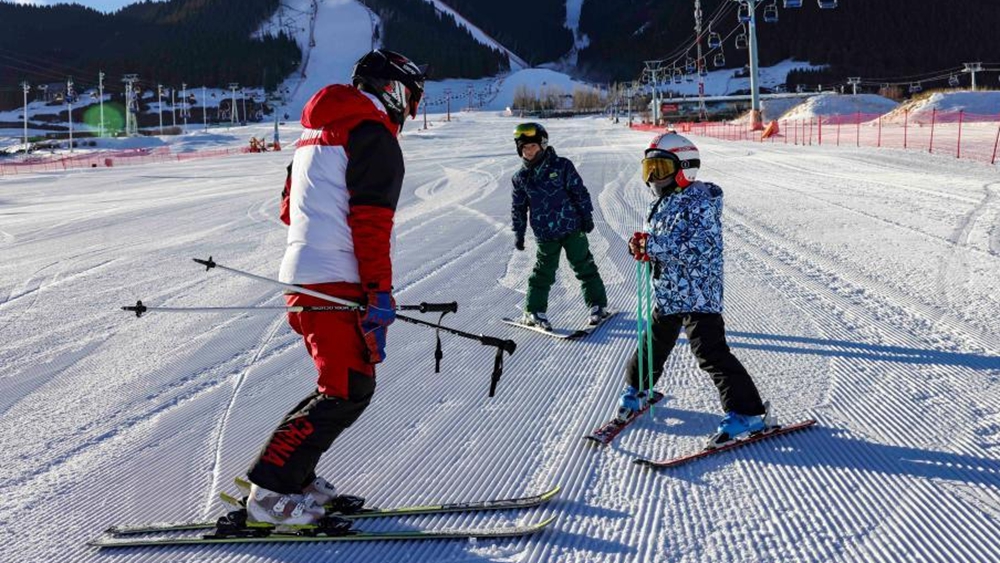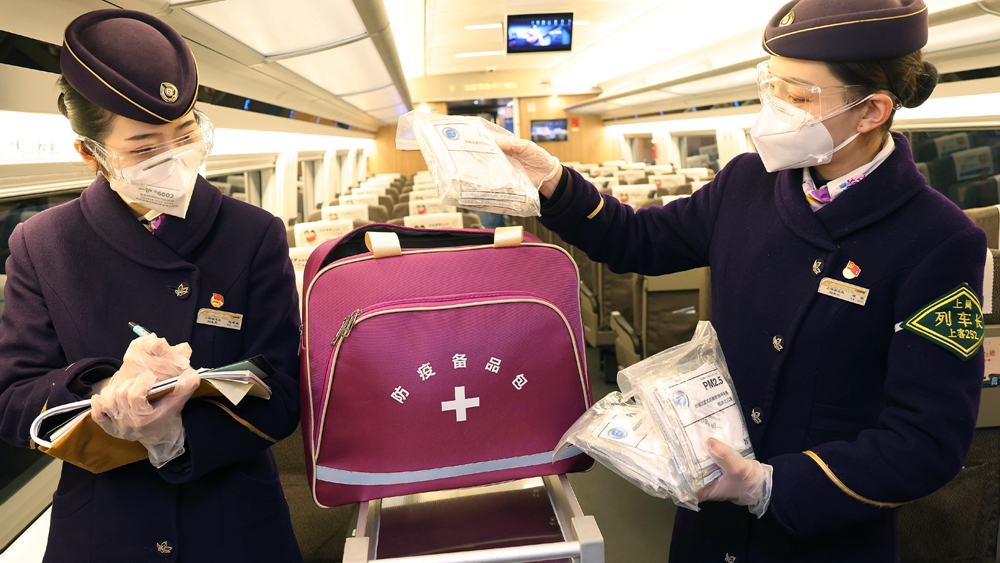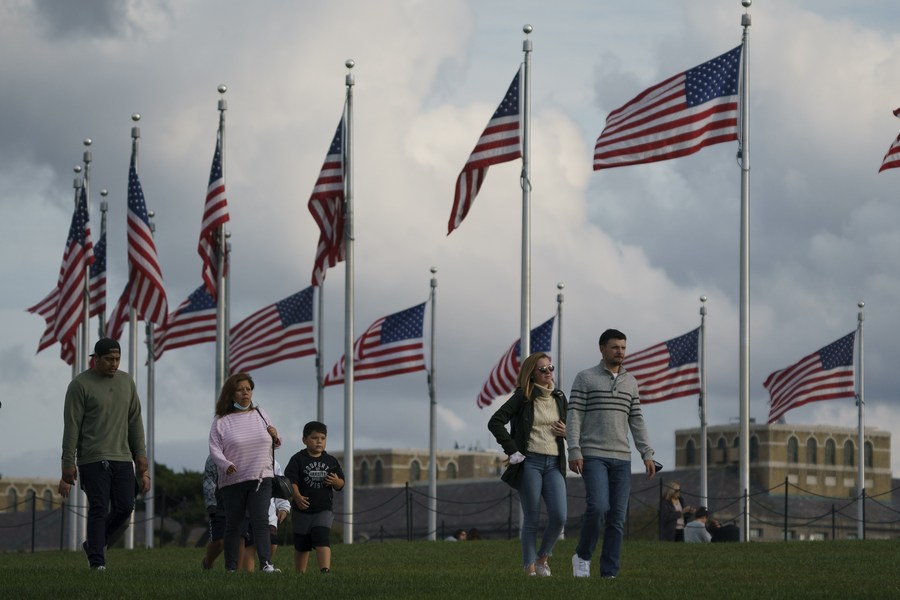
Tourists spend time on the National Mall in Washington D.C., the United States on Oct. 30, 2021. (Photo by Ting Shen/Xinhua)
"From the very beginning of the pandemic, the U.S. response was defined by slow action on tests and masks. Two years after the first coronavirus case on American soil was diagnosed, the national strategy to combat the virus is still too little, too late," said a report.
NEW YORK, Jan. 20 (Xinhua) -- Experts point to three main factors in the U.S. government's slow response to Omicron: an over-reliance on vaccines, a failure to develop contingency plans, and the fracturing of the expert consensus on what the appropriate public health interventions would be, U.S. news and opinion website Vox reported Thursday.
Advisers to the White House told The Washington Post last month that the data reported in the initial Pfizer and Moderna clinical trials, showing those vaccines more than 90 percent effective at preventing all infections, contributed to a belief within the Joe Biden administration that sufficient vaccination would be enough to bring the pandemic to an end.
"I think the Biden transition team saw the first, highly promising vaccine efficacy results from Pfizer in fall 2020 and decided against making serious investments in so-called 'non-pharmaceutical interventions' from the beginning," Justin Feldman, a social epidemiologist at Harvard, was quoted as saying.
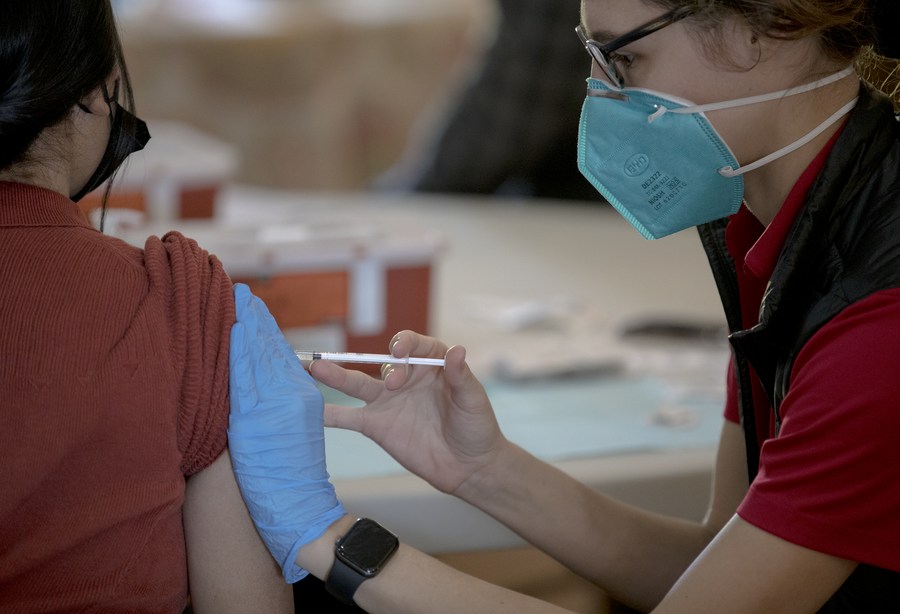
A medical staff member inoculates a person with a dose of COVID-19 vaccine at a vaccine clinic in San Antonio, Texas, the United States, Jan. 9, 2022. (Photo by Nick Wagner/Xinhua)
"This vaccine-only strategy was never a good idea, but there were wake-up calls that were missed," Feldman told Vox, which also quoted other experts as saying that "the (Joe) Biden administration and federal officials put too much faith in the power of vaccines alone to end the pandemic."
NON-CONTINGENCY
"There are limits on what the federal government can do under our federalist system of government," said the report. Mask mandates and social distancing restrictions are largely the purviews of state and local authorities. The Biden administration did attempt to take sweeping actions, such as a vaccine mandate for large employers, that got tied up in the courts.
In October, with the Delta wave underway, the White House rejected a plan to manufacture and distribute at-home rapid tests for the winter holidays. Over the summer, Abbott Laboratories, the largest U.S. manufacturer of at-home rapid tests, actually started destroying some of its test inventory because it did not anticipate a market for those tests and the government had not bought the excess supply.
"This meant that when omicron start to spread, there was not a stockpile of masks or tests to distribute to people quickly," reported Vox. "And once the new omicron variant was spreading, it was already too late anyway. As several experts emphasized, the government does not move swiftly, even in the face of an emergency."
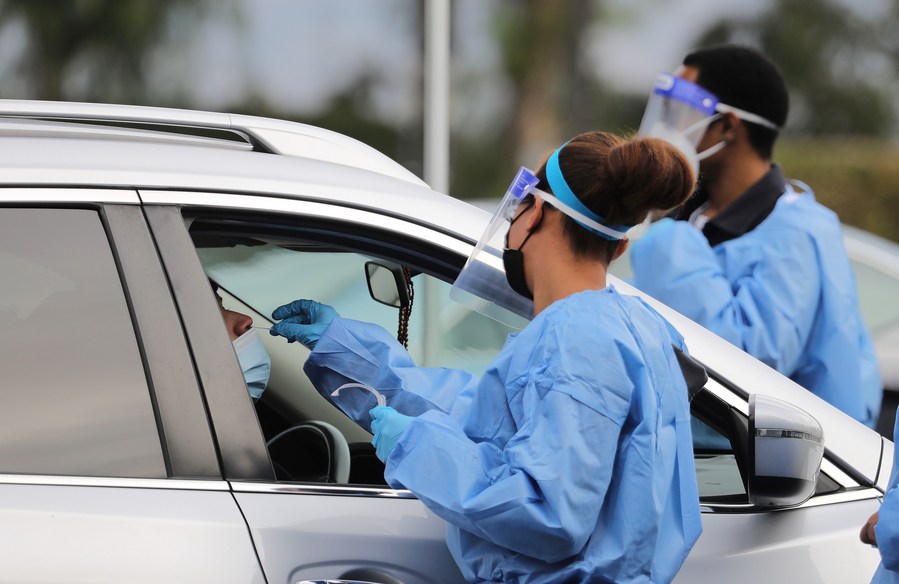
A medical worker collects a swab sample at a COVID-19 drive-through testing site in Los Angeles, California, the United States, Jan. 10, 2022. (Xinhua)
"U.S. health agencies are not accustomed to making and revising policy quickly," said the report, while quoting Bill Hanage, a Harvard University epidemiologist, as saying that "a rapid response is not possible within the way policies are normally formulated and implemented ... We're not caught fighting the last battle, but the one before that."
FRACTURING
The federal government's ability to act quickly has been complicated by another factor: public health experts are increasingly divided on what the country should be doing in its pandemic response, according to the report. "It's hard to plan ahead or change plans quickly when experts can't even agree on what you should do."
"Public health experts were never a monolith," said the report. Early in the pandemic, there was a fairly clear consensus about what to do about COVID-19, but as the pandemic has dragged on, expert opinions diverged.
For example, as the Biden administration debated booster shots this summer and fall, some experts were full-throated supporters of giving everybody an additional dose, while other prominent experts argued boosters made sense only for certain people.
"When it comes to public health overall, I think there is a relentless tendency to allow the perfect to be the enemy of the good," said Hanage. "When you are facing an exponentially growing wave of infections, we do not have the time to identify and demonstrate which policies are optimal, and that means we are caught out over and over again."
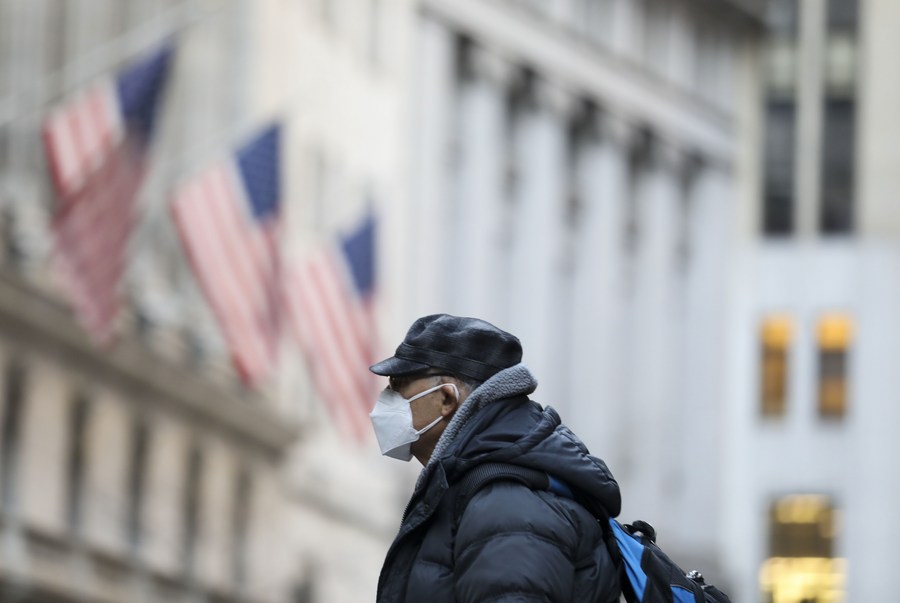
A man wearing a face mask walks on a street in Manhattan of New York, the United States, Jan. 19, 2022. U.S. (Xinhua/Wang Ying)
SLOWNESS
"From the very beginning of the pandemic, the U.S. response was defined by slow action on tests and masks. Two years after the first coronavirus case on American soil was diagnosed, the national strategy to combat the virus is still too little, too late," said the report titled "Why COVID-19 is always one step ahead of the US response."
"The Biden administration's response to the omicron variant is belatedly kicking into gear," noted the report. The White House announced on Wednesday that it would soon ship 400 million N95 masks to U.S. pharmacies and community health centers to be given away. On Tuesday, a new federal website was launched to let people order free at-home coronavirus tests.
"By the time the masks and tests get there, the surge will probably be over," said Monica Gandhi, an infectious diseases doctor at the University of California San Francisco. It's possible, but far from certain, that the Omicron wave has already peaked. The average number of daily cases has dropped by 50,000 in the last week, a 6 percent decline, according to the report.
"At this point, not sure widespread testing is going to be helpful until this wave calms down," David Celentano, who leads the epidemiology department at the Johns Hopkins School of Public Health, told Vox. ■


